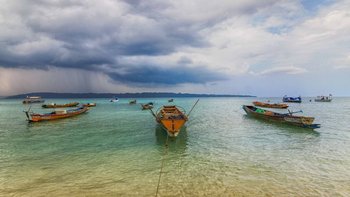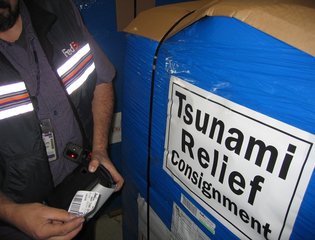The recent anniversaries of the Indian Ocean Tsunami (10 years) and the Haiti Earthquake (5 years) have prompted the usual questions about whether the system has been able to make improvements on the basis of lessons learned. Much evaluative evidence suggests that many weaknesses in the Tsunami response were again repeated after the Haiti Earthquake and there are a growing number of people who believe that the intrinsic nature of the international humanitarian system itself is the problem. And they are probably right. But what exactly is this problem, how should we understand it, and what should we do about it?
Anthropologists tell us that their intimate awareness of the movements of animals, the ocean and the earth allowed them to anticipate a tsunami was imminent after the Earthquake in 2004. When they saw animals moving to higher ground deep inside the forest they followed suit and escaped the full fury of the tidal surge. Almost all of them survived. As we know, on the mainland of Thailand and Indonesia, many thousands of people were not so lucky.
The lesson to draw here is that local knowledge is fundamentally important to effective emergency preparedness and response. Sadly, this is where the international system let itself down in both Port au Prince and in Aceh, and many of the failings documented in the evaluations are inextricably linked to agencies not understanding local culture (including language), custom and organisational arrangements. We all remember the Tsunami Evaluation Coalition’s famous recommendation for a fundamental shift away from top-down international response towards an approach tailored to building on local capacities – but sadly this has still not happened. The essential problem here is the inability of the international system to adapt to different contexts.
The ALNAP paper 'Responding to changing needs' helps shed light on how the international system responds by outlining four different models of response. One of these, the comprehensive model, has evolved by substituting weak domestic response capacity with international protocols and structures. Whilst this model is relevant in some situations, it becomes problematic when domestic capacity exists. The big problem is that the default position of the international system is to deploy this model in response to all international emergencies, whether the context requires it or not. Indeed, we have seen this again in the recent international response to Typhoon Haiyan in the Philippines.
There are other ways of doing business as demonstrated in the cooperative model where the international system works in harmony with national and civil society actors. The trick is to be able make the system more flexible and better adapted to different contexts. To be able to say we have truly learned the lessons from the past, the international humanitarian system needs to be tuned to different global contexts and be able to deploy the right kind of approach. When our humanitarian system is as well adapted as the Andaman and Nicobar Islanders we will know we have a system that is set up to succeed.

